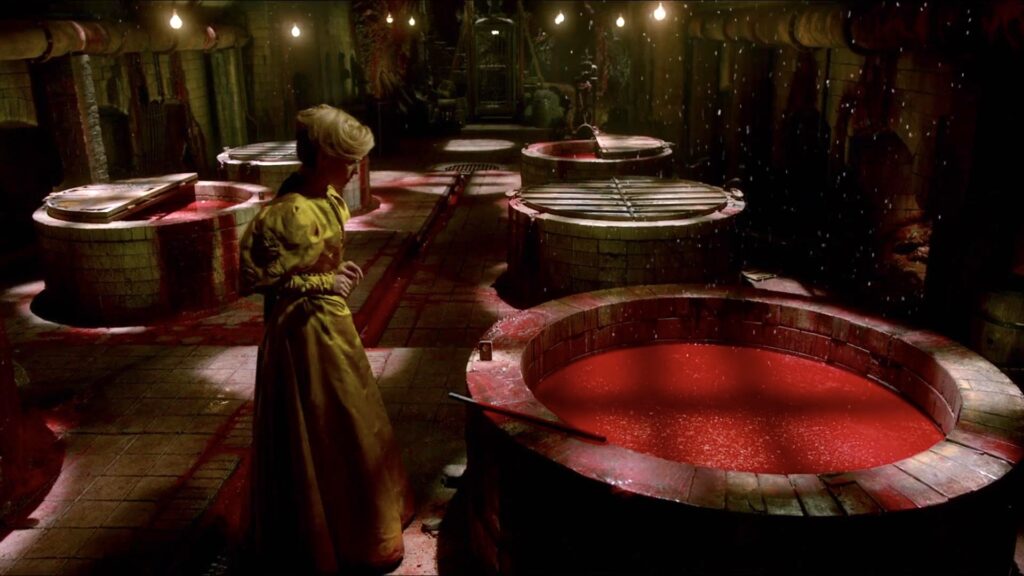In horror, houses come alive. They breathe, they bleed, they speak.
In gothic romance, houses are the backdrop for madness. They’re battered by age and weather, holding dark secrets within their crumbling walls. In Guillermo Del Toro’s 2015 film Crimson Peak, these two ominous genres are combined and the distinct features of their houses form a setting that embodies the essence of the film.


Crimson Peak’s house, called Allerdale Hall, is cut off from the rest of the world, with nothing but heavy snow for miles around, trapping newly married Edith Cushing (Mia Wasikowska) inside. The house looms over the bare grounds, isolated and imposing. On the inside, the manor is decaying. A large hole in the ceiling opens the house to the harsh weather, allowing rain, snow, and debris to shower down into the shadowy foyer, leaving it even colder inside than out. The foyer, once grand, with an expansive staircase and a view of the entire interior, becomes gloomy and grim.

In order to portray the complexity and spirit of the manor, Del Toro decided the house would have to be built from the ground up. The mansion set, comprising of three fully functioning floors and a variety of incredible details, took seven months to build. The director collaborated with production designer Tom Sanders to create the magnificent house and tailor it to the story perfectly. In developing the style and feel of Allerdale Hall, they took inspiration from an array of gothic revival houses, particularly the lonely house in Edward Hopper’s painting ‘House by the Railroad’: “The house is the embodiment of the family and the generations that have lived within it,” Sanders explained. “The whole house was designed and built in layers. I felt I could bring the history of the family into each layer and show how each generation changed what the previous one had done.”
The details of the house subtly reinforce the eerie mood of the film. The wallpaper, a design of butterflies and moths, has the word “fear” coded into the pattern. The windows are circular, like watchful eyes. The tight corridors were tailored to be just wide enough to fit Edith. They’re lined with rows of menacing spikes and repeated patterns that put the corridors slightly out of focus to create a disconcerting feeling in the viewer.

The house is haunted by ghosts that lurk in the shadows, behind locked doors, and in the long and narrow corridors. The ghosts are attached to Allerdale Hall and they become one with the house; the unrelenting creaks and groans are interchangeable between the two. Is it the whisper of wind that rushes through the floors or the moan of a despairing ghost?

And then there’s the clay. The estate is built upon a clay mine, which slowly sinks the house into the soft ground, devouring it. The red clay oozes up between the floorboards, bleeds from the walls, and makes the water run red. It stains the snow and turns it bright red, hence the name “Crimson Peak.” The mines are in the basement, which can be reached in a caged elevator that appears to be at risk of breaking at any second (the elevator was, in fact, built to be fully operational, running from the lowest part of the house to the highest). The mines are the “gut of the house” as Del Toro describes them. They hold the key to the house’s horrendous past and they are the place where the most emotional revelations and the most violent confrontations occur.

The house is a living thing, meticulously brought to life through the care and creativity of Del Toro and Sanders. It bleeds red clay, breathes with whistling wind, and speaks in groans, creaking floorboards, and slamming doors. Allerdale Hall is a work of art; a house that carries, in its details, generations of people and their gruesome secrets.
One reply on “Houses in Film: The Breathtaking Monstrosity of Crimson Peak’s Allerdale Hall”
What a great piece!